STARTING POINT
In recent years, urban planners and designers have paid more and more attention to improving people’s physical health through urban planning and design. They designed a lot of sports facilities (such as sports equipment, running tracks, etc.) to allow people to strengthen physical training.
However, the mental health of urban residents has not received enough attention.
Is it possible to improve the mental health of residents by improving the urban environment in a subtle way?
PROJECT AIM
Surveillance, is a concept that in today’s accelerated technological age, raises huge issues on ethics and technology use. More specifically, in Europe, many residents oppose the use of surveillance cameras, arguing for the risks in individual privacy or data security. European Data Protection Supervisor (EDPS) also gives guidance on surveillance, related to data quality, right of information and retention period.
However, the situation in China, where I come from, is different. China has implemented during last years the biggest number of surveillance cameras in the world. By 2020, there will be about 626 million cameras in China, most of them running in artificial intelligence and image recognition technologies. Although individual privacy issues and data security issues still exist many argue that surveillance technologies have helped Chinese residents in many ways. For instance, identifying and catching criminals is particularly prominent for China’s security today. Furthermore, these technologies can also improve issues related with mobility and traffic regulations while the development and possible implementation of self-driving technology, will require the implementation of more and more cameras i contemporary cities.
While in Europe or China, surveillance is a matter of great ethics concern, large number of surveillance cameras already exist in cities, and research shows that the number will continue to grow. (Market Trends: 5G Opportunities in IoT for Communications Service Providers report predicts that 5G IoT installed endpoints for outdoor surveillance cameras will reach 11.2 million in 2022.) Therefore, it is of crucial importance to explore the possible positive use of such technology.
Healing City is a project that explores the positive applications of surveillance technology for improving the urban environment and living following emotion’s data of citizens. The project explores the use of facial recognition technology in order to collect emotional information of people interacting with different typologies of urban environment. Intense green spaces, parks or low density areas for instance are connected with emotions of calmness or satisfaction while high dense areas, lack of urban furniture or bad shading conditions in public spaces are connected with highly stressful emotions and discontent.
The project focuses on collecting emotional – urban environment crowdsourced data by building a system operating in facial recognition. This way a catalogue of different typologies of urban space in relation to different emotions is created.
Furthermore, through image analytics of street views in a case study in Barcelona, different typologies of urban space are defined and then translated into emotions according to their type. The outcome of overlapping of these actions creates a heat-map of emotions in the selected city area.
The heat-map of emotions allows to identify risk areas and urban problems, and the final step of the project is the proposal of improvements for the urban environment enhancing people’s experience in cities.
RESEARCH MAP


URBAN ENVIRONMENT [URBAN SCENE TYPOLOGY ANALYSIS]
The urban scene typologies are obtained through the analysis of street view images.

OBTAIN STREET VIEW IMAGES
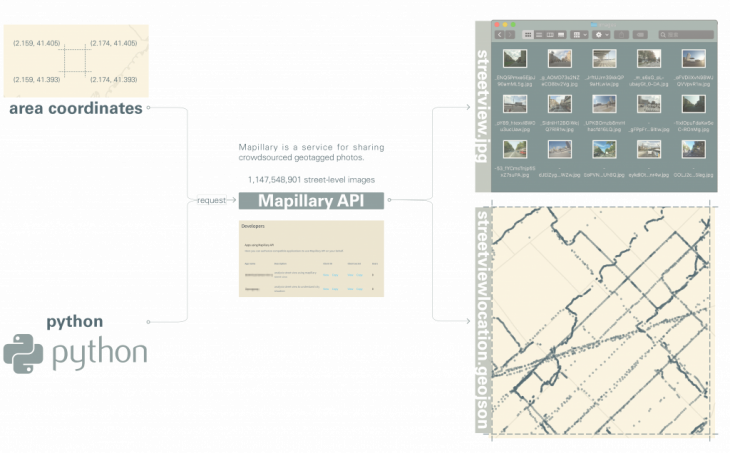
STREET VIEW IMAGE PANORAMIC SEGMENTATION
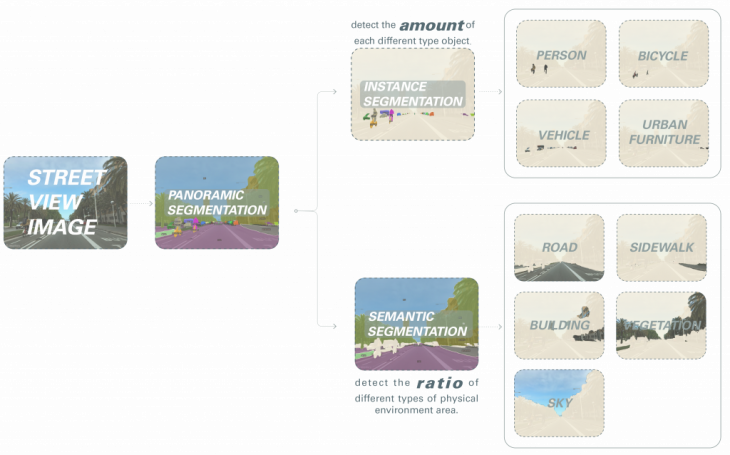
STREET VIEW IMAGE PANORAMIC SEGMENTATION – FEATURE SELECTION
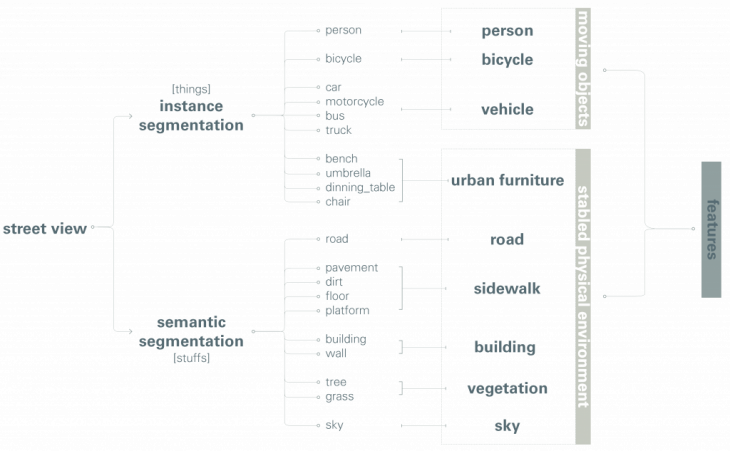
CLUSTER ANALYSIS
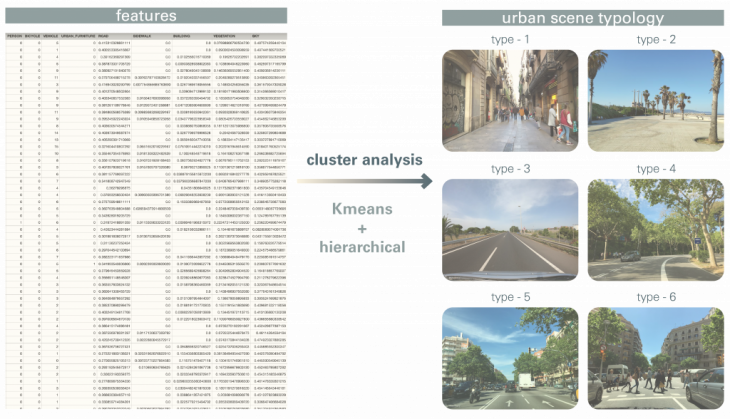
RESIDENT [URBAN SCENE TYPOLOGY – EMOTION]
By observing images of different street view (according to urban scene typology), collect unconscious emotions (facial emotion recognition) and conscious emotions (score).
Through multiple linear regression analysis, the relationship between urban environmental features and different emotions is analyzed to predict the emotions of the entire city.
SELECTION OF VISUALLY STIMULATING IMAGES
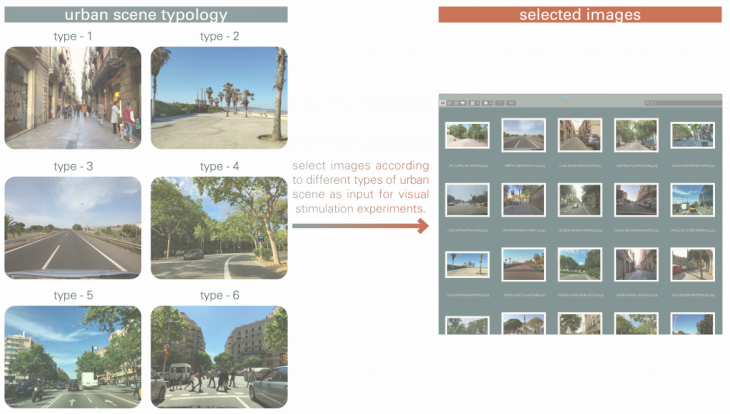
VISUAL STIMULATION EXPERIMENT
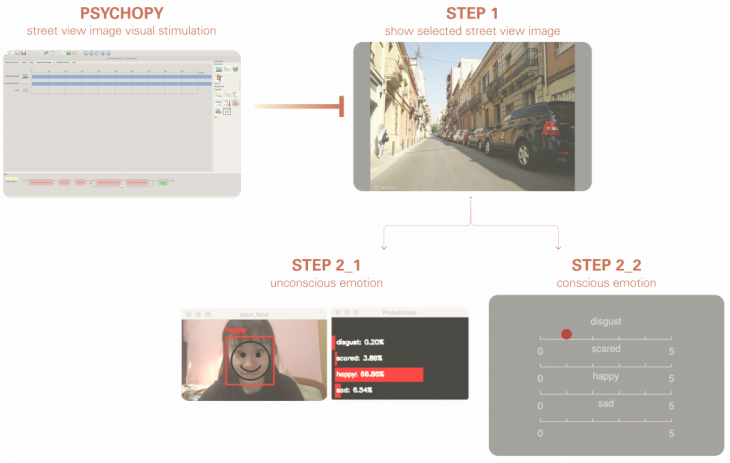
EMOTION – UNCONSCIOUS & CONSCIOUS EMOTION
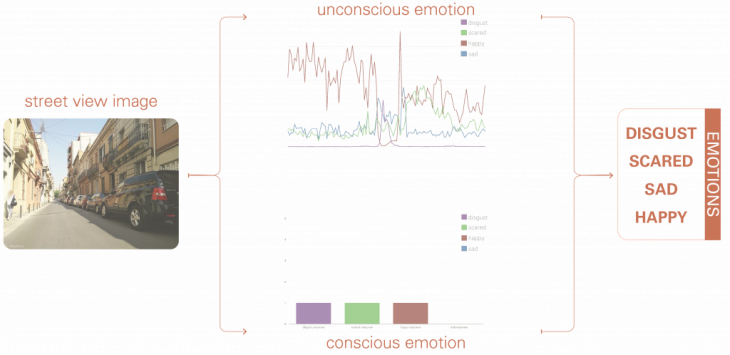
URBAN FEATURE – EMOTION REGRESSION ANALYSIS
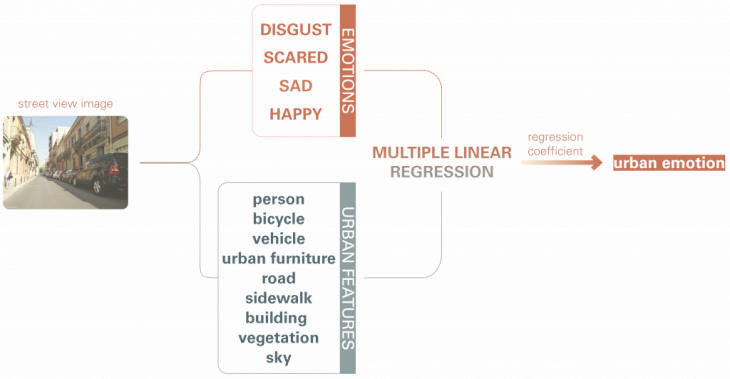
CASE STUDY – BARCELONA
Through the analysis of the urban scene typology in Barcelona and the analysis of urban scene typology – emotion, the risk area of ??the city was discovered and provide basic information for further urban environment improvement.
BARCELONA URBAN SCENE TYPOLOGY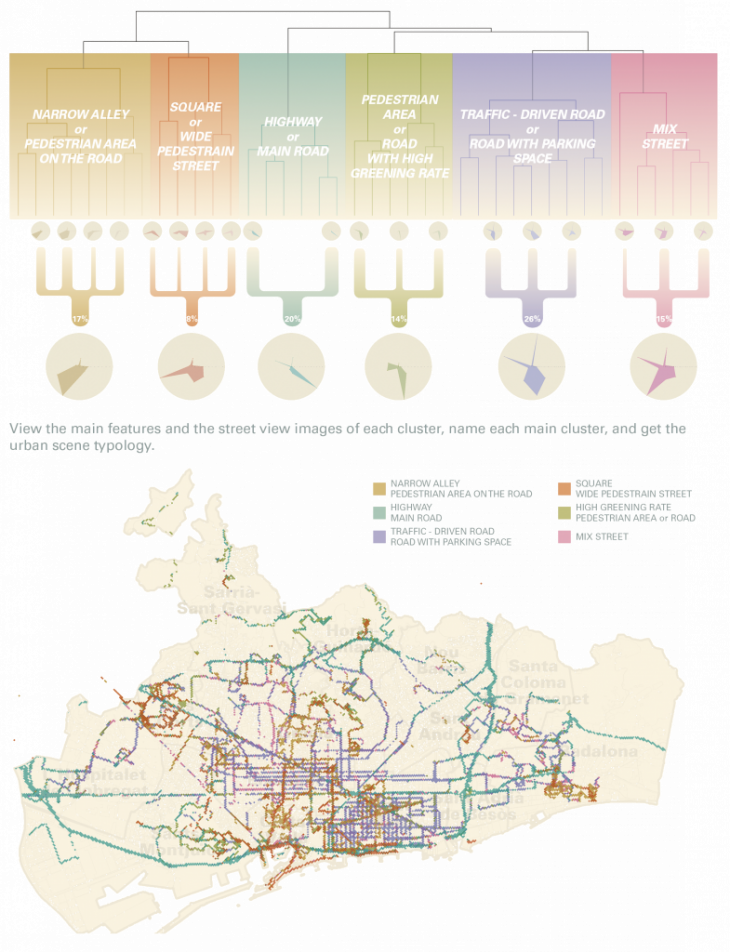
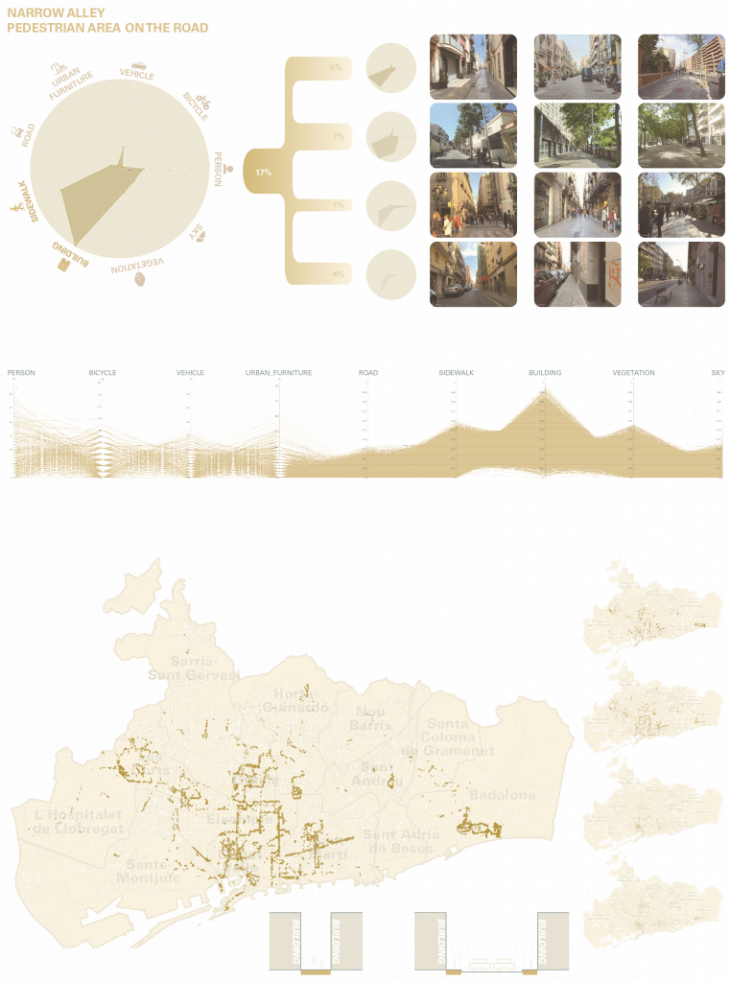
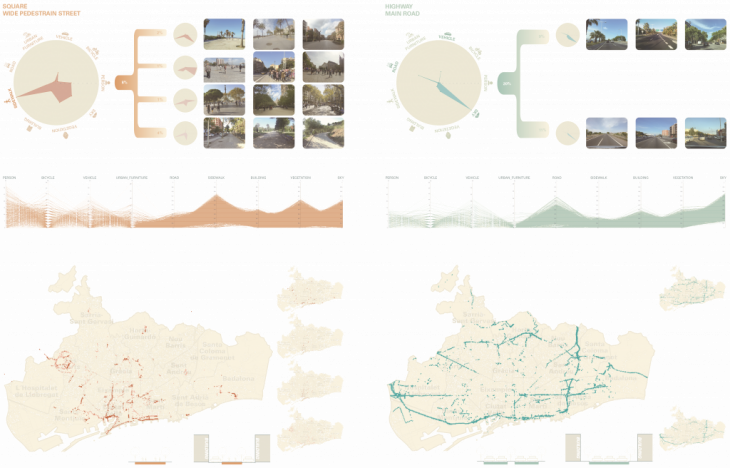
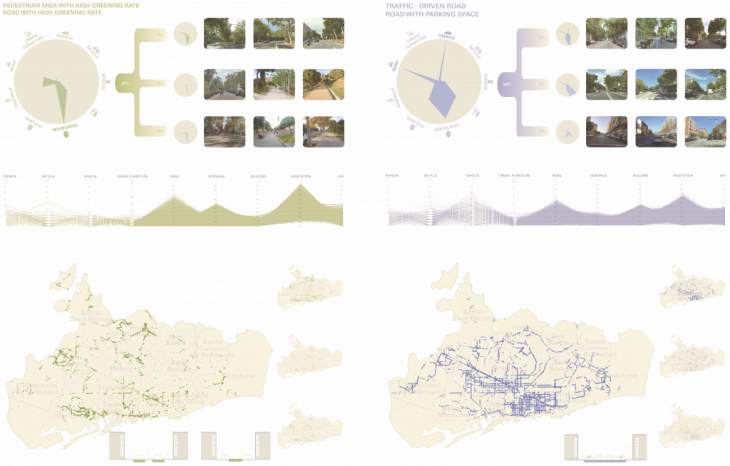

URBAN SCENE TYPOLOGY ANALYSIS SUMMARY
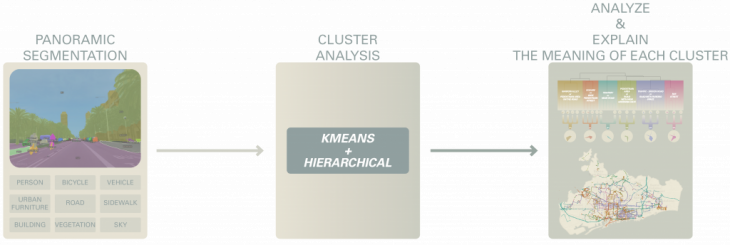
BARCELONA URBAN SCENE TYPOLOGY – EMOTION
MULTIPLE LINEAR REGRESSION (URBAN FEATURE COEFFICIENT)
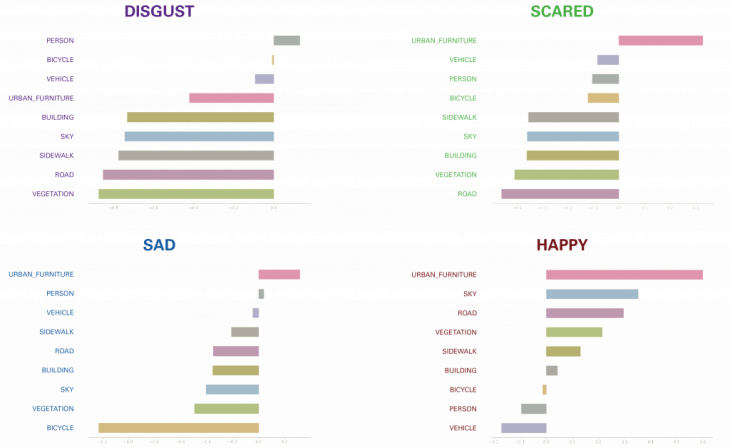
DISGUST
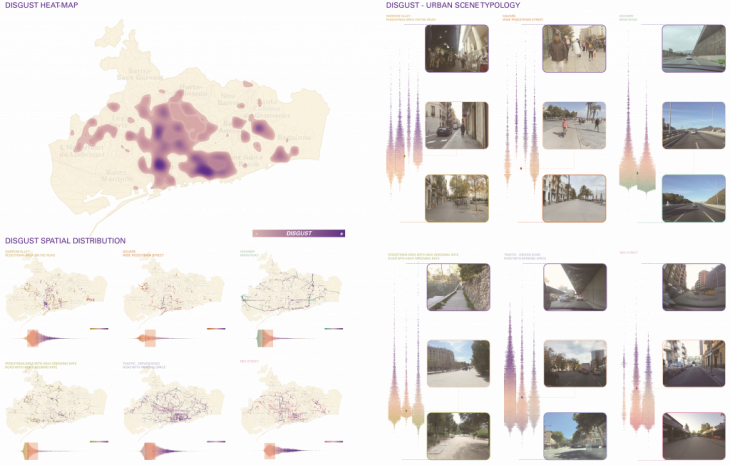
SCARED
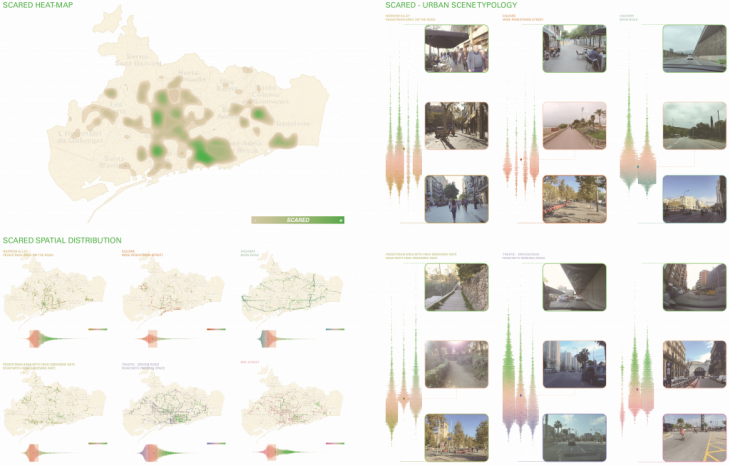
SAD

HAPPY
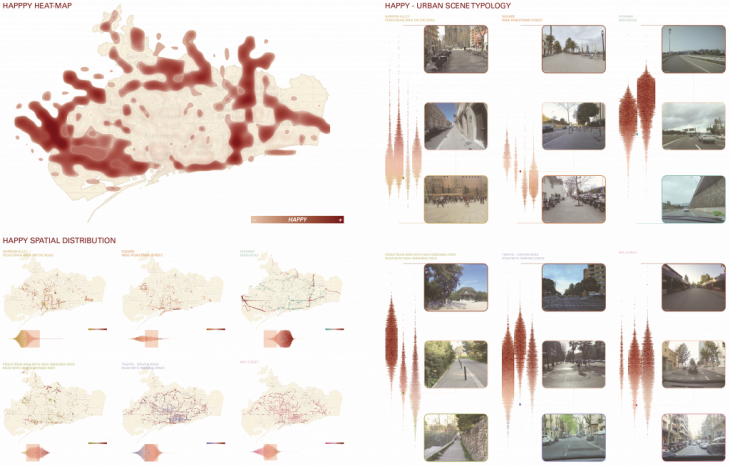
URBAN SCENE TYPOLOGY – EOTION ANALYSIS SUMMARY
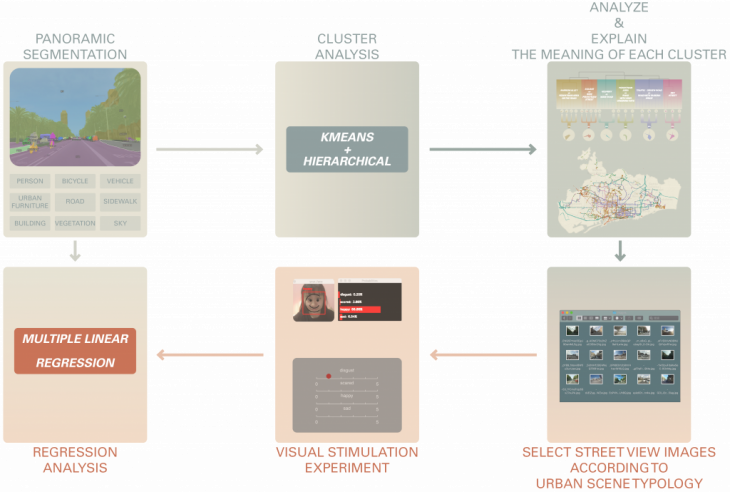
CONCLUSION
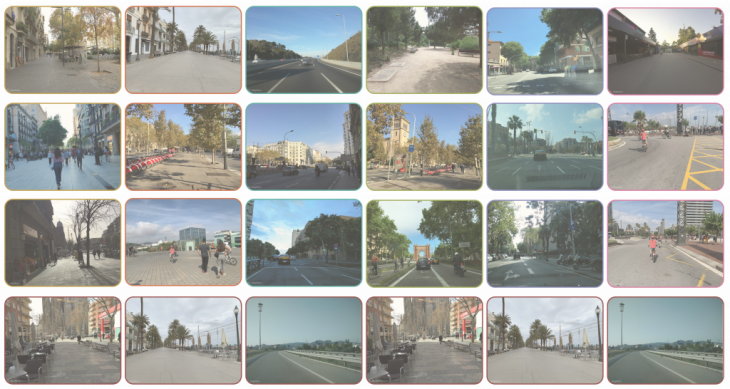
![]()
FUTURE WORK
According to the above analysis, the risk area of ??the city is found as a pilot, and the age, gender and emotion of the people in the pilot area are detected by using CCTV. Based on this, provide more detailed urban environment improvement programs to gradually improve the mental health of urban residents.

HEALING CITY is a project of IaaC, Institute for Advanced Architecture of Catalonia
developed at Master in City & Technology 02 in (2019/2020) by:
Students: Luyang Zhang
Faculties: Areti Markopoulou & Mathilde Marengo